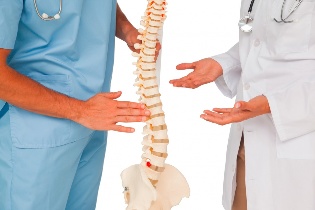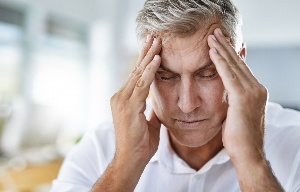
Many associate the word "osteochondrosis" with old age. There is an opinion that this is a disease of grandparents in which he “shoots in the lower back” and “hurts in the back”. However, there is only one eye truth in this delusion: osteochondrosis is trulydegenerative(i. e. , caused by a local metabolic disorder)changes in the spinethat inevitably occur in all older people. However, osteochondrosis is now found in 9 out of 10 people over the age of 45, and the first manifestations of the disease can begin as early as the age of 25.
This disease is even called“disease of civilization” because the main cause of osteochondrosis is improper “exploitation” of the spine. The fact that modern man is overworked and paradoxically is not when he is running or lifting weights, but when he is not sitting up from a chair for hours. This load is calledstaticand is very tricky. Because one thinks he is resting when he sits. But in fact, the spine works in a sitting position under increased stress.
How the spine works
To understand what osteochondrosis is, you need to understand what the human spine is. We all know that the spine consists of vertebrae connected in series by intervertebral plates. Overall, a person usually has 33-34 vertebrae: 7 of them make up the cervical region, 12 - the chest region, 5 (or 6 percent in a small percentage of people) - the lumbar region, another 5 vertebrae that grow together make up the sacrum, and finallyfive (or four, depending on individual characteristics) vertebrae of the coccygeal region. The vertebrae are actually bones and immobile, but in order for them to move freely, making our whole body mobile, and not collapse from collisions and friction, there is a layer of gelatinous material between each vertebra (so - called. nucleus pulposus), surrounded by strong multilayer plates (annulus fibrosus). This is collectively called thevertebral disc.In addition, the structure of the spine contains many ligaments, blood vessels, nerves. It is a very complex organ that largely determines the work of almost every body system as it protects the spinal cord and affects its work.

The vertebrae and intervertebral discs are constantly renewed throughout a person's life. This is due to the fact that they are well supplied with blood and always have proper nutrition. However, if for some reason insufficient food begins to flow into the spine, the nucleus pulposus loses its properties, the intervertebral disc becomes slippery and less flexible, cracks appear in the ring, and the vertebrae themselves begin to move in different directions and close to each other. All of this leads to a number of dangerous deviations - most notably thatInflammation in both the spine and surrounding tissues, and compression of the spinal cord and spinal nerves.
Interestingly, a concept such as “spinal osteochondrosis” exists mainly in post-Soviet space. In the foreign literature, changes in the spines are called“hernias, ” “myofascial pain, ” “plate injuries, ” and “dorsopathy”. So, if you’ve heard something similar about yourself, it means you’re suffering from osteochondrosis of the spine. As for theintervertebral hernia, it is considered a stage of osteochondrosis.
The disease has no acute course and develops gradually: first the intervertebral disc narrows, changes degeneratively, thenprotrusions appear- the nucleus pulposus appears to be displaced and mixed with the fibrous ring, but. When the annulus fibrosus ruptures,is referred to as an intervertebral hernia.In the last, most severe stage of osteochondrosis,the intervertebral discs are completely worn out, the vertebrae begin to rub against each other and collapse, and pathological bone growths and osteophytes appear on them. In the last stage, the spine appears to be petrified, meaning it loses its mobility, which can lead to disability.
Causes of Spinal Diseases
Why do the abovedegenerative changes occur?As already mentioned, the main reasonis an abnormal load on the spine:for example, when a person has to sit in a lot of discomfort, “hunched over”, the neck and chest regions experience tension and do not receiveemergency nutrition. In addition,osteochondrosis can develop due to poor posture.However,sports, especially intense sports, can lead to degenerative changes in the spineby violating the technique of performing exercises.
Another common cause is anyback injury. The development of osteochondrosis can be influenced byhereditary genetic predispositions, hormonal disorders, overweight, unhealthy diet, insufficient water intake and consequent dehydration, smoking, and alcohol consumption.
Women often experience the first manifestations of osteochondrosis during pregnancy, and then when young mothers have to feed their babies in an awkward position and often carry them in their arms, the condition of the spine deteriorates noticeably.
Symptoms of osteochondrosis
The symptoms of osteochondrosis vary and depend on exactly which department the abnormality occurred in. The main manifestation of this pathology is pain, however, as long as the annulus fibrosusrupturemay be mild, dull, depressing, and patients may not even pay attention to it.More often, the pain intensifies in the morning or after exercise, radiating to the arms, legs, neck, ribs, and chest (in this case, osteochondrosis can be easily confused with coronary artery disease).
In addition,numbness and tingling may occur in the limbs.
In osteochondrosis of the cervical spine,may cause headache, sometimes very severe, dizziness, nausea, wheezing in the ear. The formation of a hernia, which leads to compression of nerve endings, can lead to disruption of the work of the internal organs associated with the nerve involved. For example, with a lumbar spine hernia, urinary problems may occur, potency disappears, in the chest - indigestion, neck - problems with the blood supply to the brain.

Diagnosis of osteochondrosis
Only a doctor can distinguish osteochondrosis from other diseases of the internal organs and determine the source of pain. Today, magnetic resonance imaging is the most reliable method of diagnosing spinal diseases.
X-raysare also reliable but less informative. On an X-ray, you can see the change in the intervertebral discs, but for example, you cannot see the hernia and cannot assess the condition of the spinal cord and the degree of compression of the displaced vertebrae. In addition, MRI makes it possible to distinguish osteochondrosis from other dangerous diseases, including malignancies and Bechterew’s disease.
Can osteochondrosis be cured?
Unfortunately, it is impossible to cure osteochondrosis, but it is possible to alleviate the patient's condition andstop the further destruction of the intervertebral disc, but this requires a complete change in lifestyle - physiotherapy, swimming, regular training. massage or manual therapy, start eating right and give up bad habits. Sports, massage, proper nutrition and weight loss can have a significantly greater and long-term healing effect than medications.
Doctors continue to debate the effectiveness of chondroprotectors - drugs that restore cartilage and supposedly strengthen annulus fibrosis, have not been sufficiently proven to be effective, but because they definitely do not cause harm, they can be used to treat osteochondrosis.
For severe pain, your doctor may prescribe non-steroidal anti-inflammatory drugs (NSAIDs), muscle relaxants (painkillers) and painkillers.
It is used to treat osteochondrosis andvitaminsbecause their deficiency causes further destruction of the intervertebral disc: for example,B vitaminshelp to improve protein metabolism between tissues, and proteinthe main building block in the body, then the normalization of protein metabolism contributes to the recovery of nerve and cartilage tissue. Vitamin A improves blood circulation. However, you should be careful when taking vitamins like any other medicine, as they can cause serious side effects and should only be taken after consulting and under the supervision of a doctor.
Surgical treatment of osteochondrosis is also possible, but is usually used whensignificant narrowing of the spinal canal and excessive compression of the nerves and spinal cord by the resulting hernias. In this case, the situation is so difficult that, for example, the patient is unable to walk, his internal organs are damaged, or there is a risk of developing a stroke. Most often, such severe consequences are caused by osteochondrosis of the cervical and lumbar spine, degenerative changes in the thoracic spine, even in the presence of a hernia, almost never require surgical treatment.
Today, the methods of so-called gentle surgeryareactively introduced into medical practice, where doctors manage to preserve the integrated structure of the vertebrae by removing part of the pulp of the nucleus using aendoscope. . The device is placed at the site of the lesion in the spine through small incisions in the skin, which avoids large blood loss. Because the entire disc is not removed during surgery, the biomechanics of the spine are usually not disturbed, and this shortens the healing period. Often patients get up within a day of surgery. Any spinal surgery is still fraught with complications and subsequent relapses of the disease, so experienced professionals will try to delay the surgical treatment until the last. And here it all depends on the patients themselves: if they follow all the recommendations of the doctors and take care of their health, they will be able to do so even in the presence of hernias without surgery.


















































